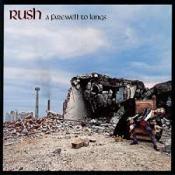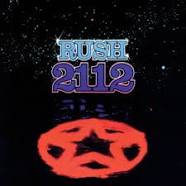20 Rush Albums in 20 Days: Snakes and Arrows
 DAY EIGHTEEN: Snakes and Arrows, running time 62:45, released May 1, 2007
DAY EIGHTEEN: Snakes and Arrows, running time 62:45, released May 1, 2007
Snakes and Arrows has been compared with the Rush recordings of the late 70s. It is anything but. Four huge distinctions: the busier, grungier production; the less melodic vocal parts over meterless poetry; the minor-key leanings; and the overall length of the recording. Now, that doesn’t necessarily suggest that it’s a poor effort, and there is a younger generation of Rush fans who love this album. For me, Snakes and Arrows is a laborious listening experience, like wading through an endless sea of mud. Sure, it feels kind of cool during those first few steps, all squishy and thick, but before too long, your calves hurt and your toenails are full of gook.
My major gripe is the minor key drudgery of the songs. So dark, so monotone, so unsingable, one after another after another. Nearly every song begins and ends in a minor key, each sounding much like the one that preceded it. As I’ve stated before, I’m a melody guy for the most part, but the lyrics here – like many of those on Vapor Trails – once again feel like they were jerry-rigged into the songs; meterless, rhymeless poetry that doesn’t lend itself well to tunes. Try singing the verses to “Armor and Sword.” If you can do it, you are a better man that I (or maybe just a bigger Rush fan). And the verses of “The Way the Wind Blows” are an absolute mess, undermining a fine chorus. Now, nothing says you can’t have lyrics that are difficult to sing and that don’t lend themselves to traditional melodic phrasing, and Rush seems to have embraced this technique as of late, but for me, it simply doesn’t provide for a pleasurable listening experience.
The album starts off strong with “Far Cry” and there’s enough good stuff happening in “Spindrift” for me to recommend that song (I love the simplicity of the musical theme and the chorus), but even this song loses its way during a wretched bridge with Geddy backing himself up on vocals (a technique he employs way too often). That’s about as much as I’d care to return to if I was compiling a best-of Rush mix tape. Rush’s nineteenth album is clearly a superior effort than Vapor Trails in terms of production, but as far as the songs go, I actually prefer the earlier release.
Snakes and Arrows features three instrumentals, which isn’t a bad idea for an aging band known for its virtuoso instrumentalists. If they worked at it, Rush could actually make an album entirely of instrumentals. But here, they’re just okay, lacking the melodic themes of a “YYZ” or even a “Where’s My Thing,” serving more as interludes between vocal songs than as features. “The Main Monkey Business” goes on forever without going anywhere, but “Hope” is a nice Lifeson piece, again aimless, but short and pleasant.
Tomorrow, I’ll be listening to…drum roll, please…number 20, Rush’s latest, Clockwork Angels, which means that in two days I’ll be ending my journey with the polarizing Caress of Steel. That outta be interesting.



